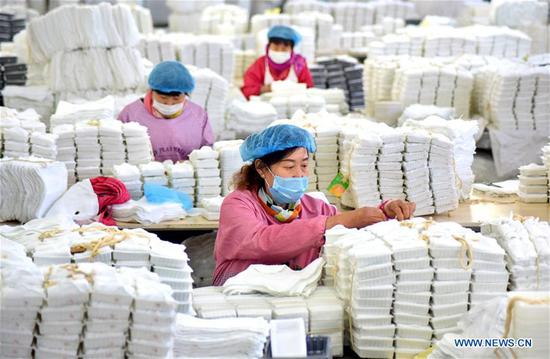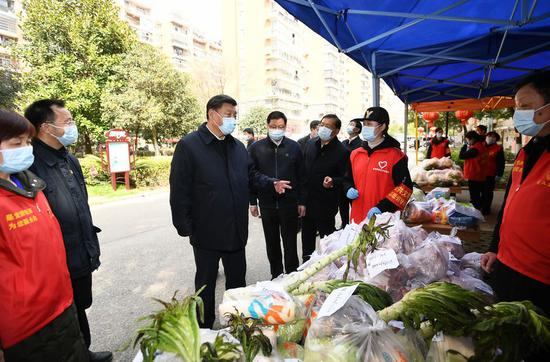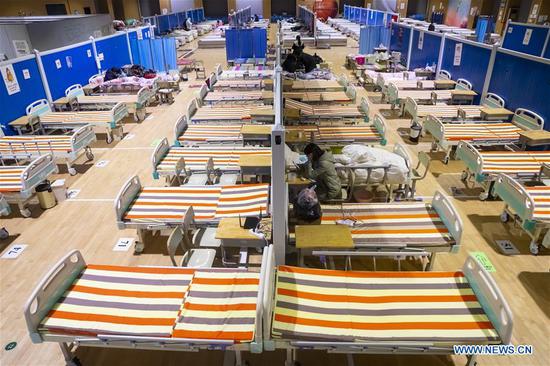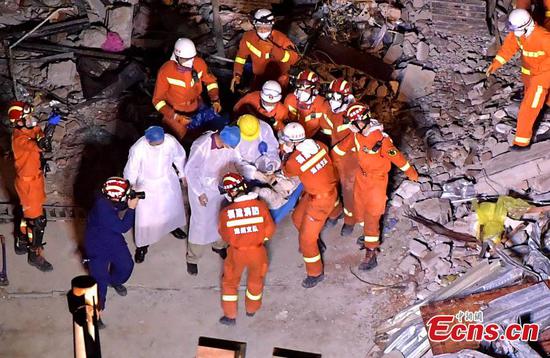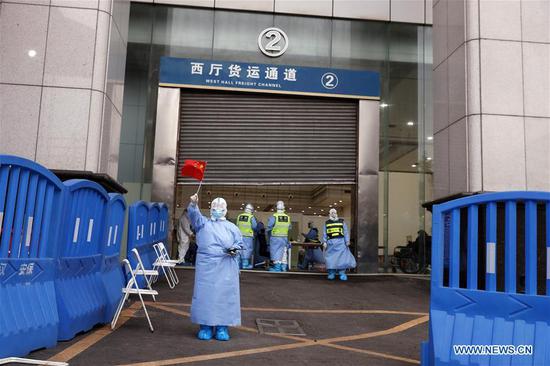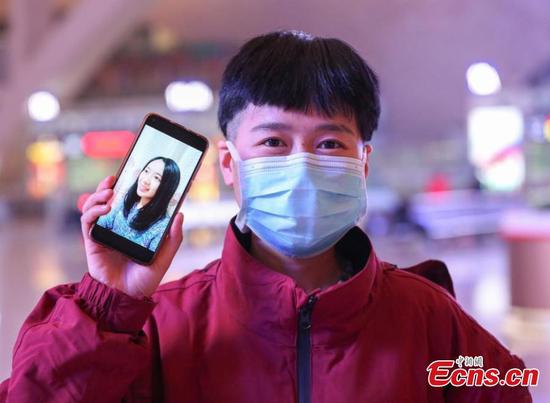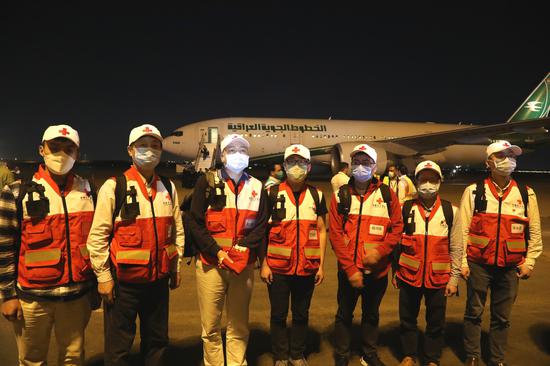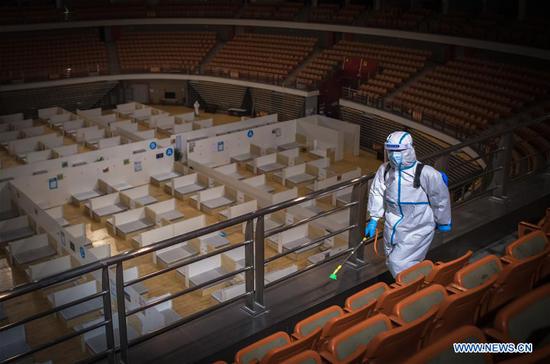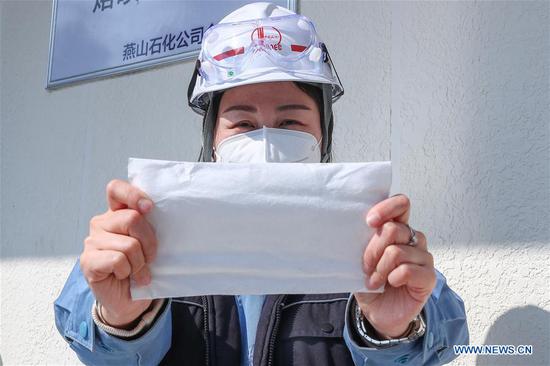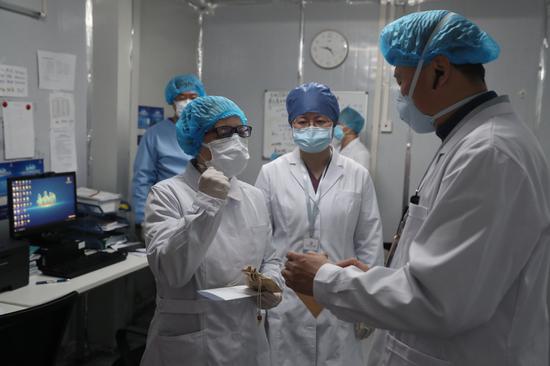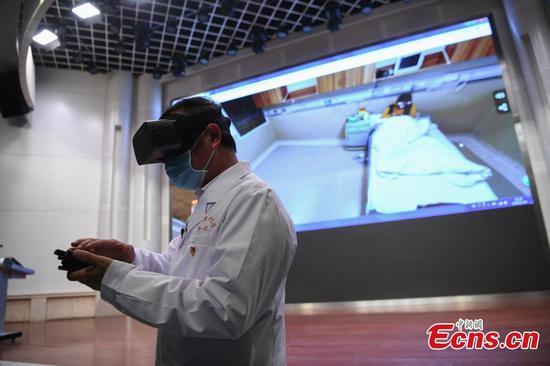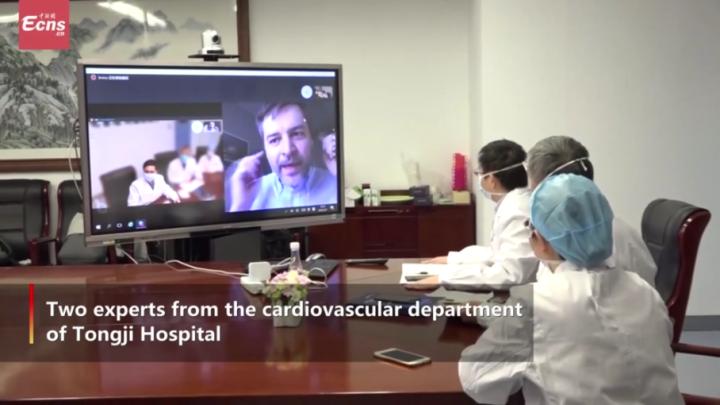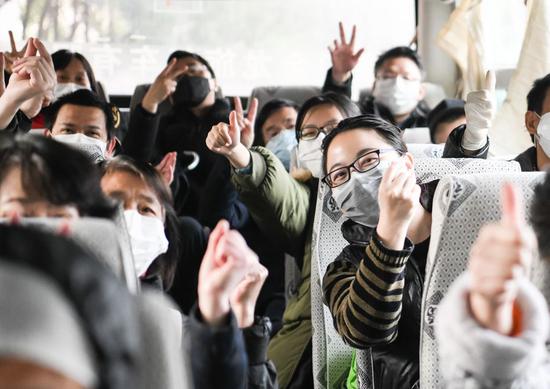
Cured coronavirus patients gesture on the bus home after a 14-day quarantine for medical observation at a rehabilitation center in Wuhan on March 10, 2020. (Xinhua/Cheng Min)
Wuhan, the epicenter of the novel coronavirus outbreak in central China's Hubei Province, has closed all of its 16 public facility-turned temporary hospitals as the number of COVID-19 patients continues to drop in the city.
The hospitals were converted from public venues such as exhibition centers and gymnasiums in early February in an effort to treat patients with mild symptoms and isolate the source of infections amid strained medical resources.
By the closure of the last two hospitals Tuesday, the temporary hospitals in Wuhan have received a total of more than 12,000 patients, according to local authorities.
Over 8,000 medical workers from 94 medical teams across the country have worked in the temporary hospitals.
Wuhan reported 17 new confirmed cases Monday, dropping below 20 for the first time and a significant contrast with a month ago, when 1,921 cases were reported on Feb. 9.
"The erection of temporary hospitals is an innovative and effective move that has achieved its initial goal of treating more patients and containing the source of infection," said Hu Yu, head of Wuhan Union Hospital, which manages one of the temporary hospitals.
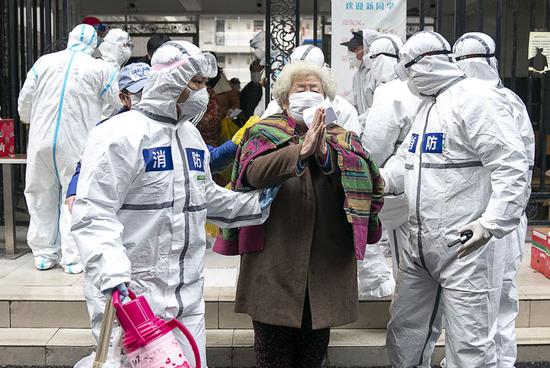
EFFECTIVE MOVE
At the Wuchang Hongshan Stadium, the last batch of 49 patients was discharged from the temporary hospital at around 3:30 p.m. Tuesday.
The stadium was among the first three public venues to be converted into temporary hospitals when the authorities first announced the plan on Feb. 3. Wuhan reported 1,242 new confirmed cases on that day.
The temporary hospital started to accept patients on Feb. 5. Through its 35 days of operation, over 860 medical workers from 14 medical teams of nine provinces and municipalities treated patients there.
"In our first week here, we were under great pressure as it is something that we had never done before," said Xu Junmei, deputy head of the Wuchang temporary hospital.
The hospital faced logistics issues, distrust from patients and the lack of operation experience at the beginning, but in mere days, the situation improved, said Wan Jun, head of the hospital.
"As the first batch of patients was discharged six days later, both the patients and health workers got a confidence boost," Xu said.
As of Tuesday, the hospital has treated a total of 1,124 patients, with over 880 discharged.
As the recovery rate improves, the strain on local medical resources is eased. Wuhan temporary hospitals had around 5,600 spare beds by Feb. 28, according to Ma Xiaowei, head of the National Health Commission.
On March 3, Hubei Province announced that it would gradually shut down temporary hospitals in the province and cut the number of hospitals designated for the disease amid improving signs.
The Jianghan temporary hospital, which received the most patients and saw most recovered patients among all local temporary hospitals, was closed on Monday.
"The construction of the makeshift hospitals was a crucial and significant step that expanded our medical resources in a short period of time," said Ma.
The World Health Organization said in a report late last month that the country's "bold approach" had "changed the course of a rapidly escalating and deadly epidemic."
"In the face of a previously unknown virus, China has rolled out perhaps the most ambitious, agile, and aggressive disease containment effort in history," the report said.















